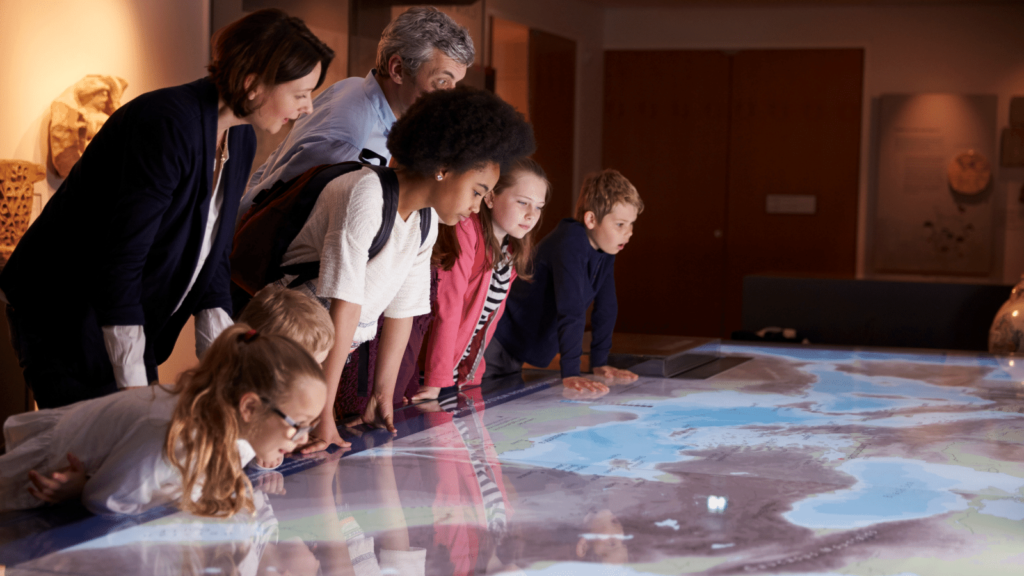Imagine walking into a museum or gallery and instantly feeling captivated by the exhibits, eager to explore every corner, and already planning your next visit. Enhancing the visitor experience is crucial if you want to attract and engage new audiences and encourage repeat visits.
In this blog post, we’ll explore practical tips and strategies for creating immersive and interactive experiences that will leave a lasting impact on your visitors.
Understand Your Audience
Before embarking on designing more immersive experiences, you need to understand the preferences and interests of your visitors. And remember, your audience isn’t monolithic—they’re individuals with diverse interests, backgrounds, preferences, and expectations.
Conducting audience research will help you gain valuable insights into their expectations and interests. Consider using surveys, focus groups, or social media listening to gather data that informs the design of new exhibits and experiences.
It’s also worthwhile to run some analysis from your CRM and get a sense of how often your repeat visitors return. To encourage repeat visits, try to refresh or change temporary exhibits as often as your visit analysis and budgets permit. For example, if the average visitation gap is six months, refreshing every four or five months might drive those visitors to come back more often.
Practice Storytelling Techniques
The magic of storytelling cannot be overstated. It’s the glue that binds history, art, and culture together, making them accessible and relatable. Museums and galleries can incorporate narratives, personal stories, and historical context to engage visitors and make exhibits more memorable.
Look to successful storytelling techniques used in other museums or galleries for inspiration. For example, The British Museum in London excels in showcasing the interconnectedness of human history throughout its exhibits, providing context and narratives that keep its visitors engaged.
Create Interactive Exhibits
Interactive exhibits are the bridges between curiosity and understanding. Consider incorporating different types of interactive displays such as touchscreens, virtual reality, sensory experiences, or hands-on activities.
By inviting visitors to actively participate, touch, explore, and learn, you’re giving them a stake in their own journey of discovery. The Heyman Family Art Lab at the Museum of Modern Art is a great example of a hands-on space for kids and families to engage in artistic play and activities.
Incorporate Technology
Technology, when thoughtfully integrated, can amplify the experience without overshadowing the exhibits themselves. Consider using technology like augmented reality, mobile apps, or audio guides to provide additional information, interactive content, or virtual tours.
For example, utilizing QR codes on exhibit signage can provide visitors with easy access to digital maps or additional multimedia content.
Host Engaging Events
Organizing workshops, artist talks, or interactive demonstrations are a great way to attract new patrons and drive repeat visits. These events provide a unique opportunity for visitors to connect with artists, experts, and their fellow attendees while deepening their understanding of your organization.
If you need some inspiration, search to see what events or programs other arts and culture organizations have seen success with!
Ask Visitors for Feedback
Visitor feedback is a treasure trove of insight. Ensure your team continuously seeks feedback through onsite surveys, comment cards, or online reviews. And by actively listening to and incorporating visitor feedback, not only do you enhance your offerings, but you also demonstrate your dedication to their experience.
In the world of museums and galleries, the visitor experience breathes life into every exhibit and artifact. Crafting immersive and interactive experiences isn’t just a trend; it’s how you can transform a casual visitor into a loyal patron.
As we’ve explored in this blog post, the keys to achieving this lie in understanding your audience, mastering the art of storytelling, creating interactive exhibits, leveraging technology thoughtfully, hosting engaging events, and embracing visitor feedback.
In the end, the goal is to create a space where visitors don’t merely observe—they immerse themselves, learn actively, and forge lasting connections with the stories you share. As you embark on the journey of enhancing your museum or gallery’s visitor experience, remember that your dedication can transform how people engage with art, culture, and history.

